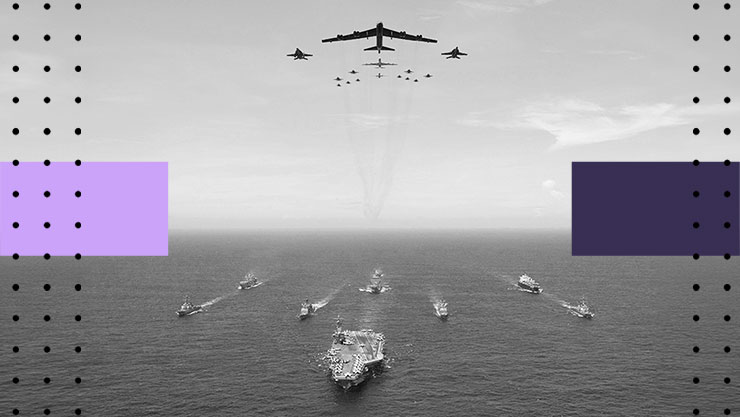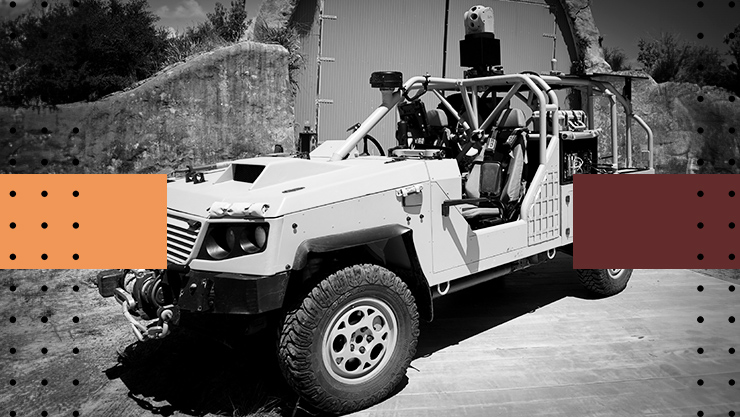
Adopting Artificial Intelligence in Defense Organizations
By Gus MacGregor-Millar, General Manager for Defense & Intelligence Worldwide at Microsoft
Defense and intelligence organizations are eager to adopt artificial intelligence (AI) and harness the transformative capabilities to achieve security and attain mission success. As I reflect on my discussions with defense and intelligence leaders from around the world, they are actively investigating how to implement and integrate AI into their organizations. They are inspired and we have discussed in great detail how AI, especially generative AI, can be a positive force-multiplier. For instance, how AI can help ensure personnel have the right information at the right time, from HQ to edge. Or how it can modernize and automate processing data that informs decision making, readiness. Or even how digital engineering can transform the capability life cycle and so much more.
This is an exciting time as we explore together how technologies, like cloud and AI can help empower militaries, improve operations and protect national security.
But every conversation ended with the same question “how do we get started?”
To realize the full potential of AI technology, there are a few key actions to take to help you get started.
Step 1: Harness the power of the cloud. If you aren’t already using the hyperscale cloud, this is an important step and imperative to fully leverage the capabilities of AI. If you haven’t migrated your workloads to the cloud, I encourage you to read the report, The Necessity of Hyperscale Cloud in Defense and watch the training video Harness the Power of Cloud: Guidance to Help You Along Your Adoption Journey.
Step 2: Get your data estate AI-ready. Data is the fuel that powers AI technology. Take time to evaluate your data estate and make necessary moves to migrate your data to the cloud. Learn how to create a well-designed data classification framework and watch training video Data Culture: Data Driven Organizations to understand how to create a data-driven culture.
Step 3: Make a plan. Create your vision for what you want to accomplish, which will act as your north star. Meet with other team leaders in your organization and work together to understand areas where AI technology could be integrated and used to advance outcomes.
Step 4: Build intelligent app experiences: Once your data estate is evaluated and you have your plan for where AI can be integrated into your organization, start exploring and building intelligent app experiences with Azure AI. As you start integrating AI, make sure you are doing so following Responsible AI standards that can ensure your deployments value fairness, privacy and security, reliability and safety, inclusiveness, and accountability. Explore the Microsoft Learn module Fundamentals of Responsible Generative AI to learn how to more about to deploy responsible generative AI.
Step 5: Train your workforce: Skilling is not only about learning how to use AI tools, but also how to comprehend the ethical, legal, and social implications of AI, and how to ensure the reliability and security of AI systems. It will be through training that defense and intelligence organizations will be able to harness the full power of AI for their missions and achieve their goals.
While this is the last step outlined here, this one can begin at any time once you’ve decided you want to leverage AI in your organization.
Here are a variety of resources to help defense and intelligence organizations from beginners to advanced skill themselves and their teams on artificial intelligence.
- Explore the Worldwide Learning Collection AI in the Public Sector: This collection of content is tailored to public sector organizations looking to learn more about using artificial intelligence responsibly within public sector organizations. Find articles, research, skilling resources and videos to help you along your AI adoption journey.
- Microsoft AI Learning Hub: Learn more about the AI learning journey, find tools and resources to help you build the skills your organization needs, find AI skilling based on your role within your organization and how to participate in skilling events like the AI Skills Challenge.
- Generative AI Learning Companion: This Learning pathway brings together a multitude of Microsoft resources to help you learn and grow in the field of generative AI.
As a veteran, I have seen for myself how important it is to adopt cutting-edge technologies and have access to data to make informed decisions to maintain stability and security in a rapidly changing environment. It is crucial to also understand and use new digital technologies, like AI, which can offer unparalleled levels of efficiency, accuracy, and security and can help you advance your missions across land, sea, air, space and now cyberspace. I invite you to explore the Defense & Intelligence page on the Public Sector Center of Expertise to find more resources to help you learn about digital transformation and using advanced technologies like AI in your organization.
About the Center of Expertise
Microsoft’s Public Sector Center of Expertise brings together thought leadership and research relating to digital transformation in the public sector. The Center of Expertise highlights the efforts and success stories of public servants around the globe, while fostering a community of decision makers with a variety of resources from podcasts and webinars to white papers and new research. Join us as we discover and share the learnings and achievements of public sector communities.
Questions or suggestions?






